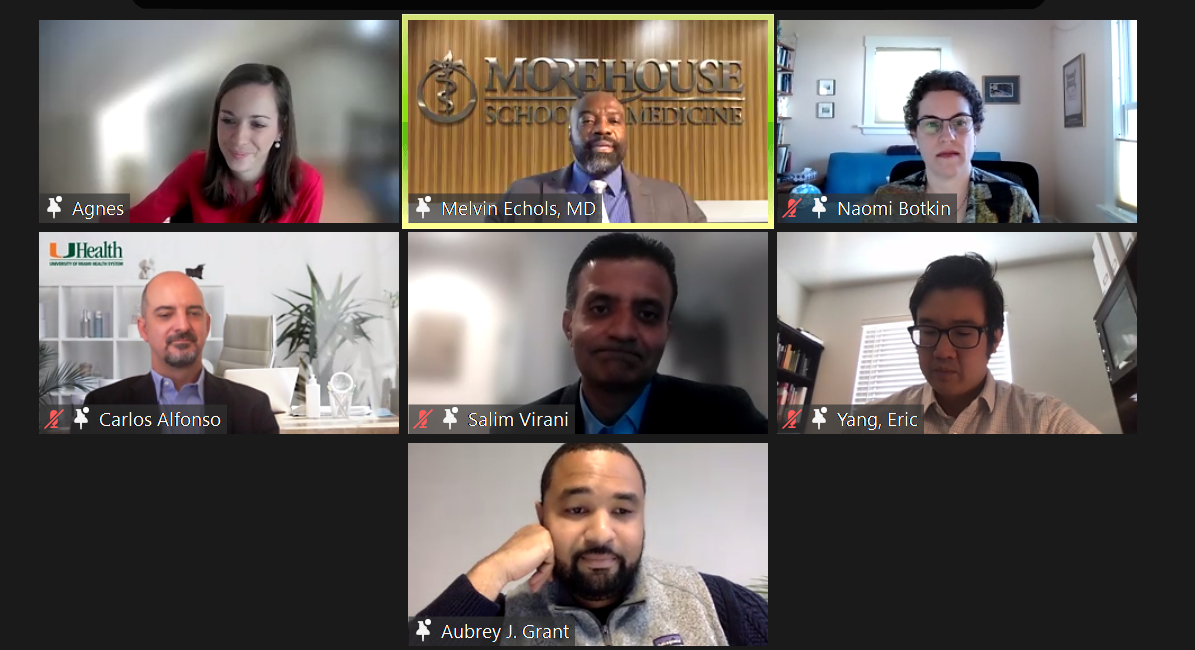The Power of Mentorship
As many of us are finalizing our application for fellowship this summer, it’s also a wonderful time to reflect on the journeys that brought us here. It’s no small feat to complete undergraduate training, medical school, and internal medicine residency and have all of that hard work culminate in this application for cardiovascular fellowship training. I’m excited and often blown away by the creativity and successes of my fellow applicants.
One aspect of this journey I’ve reflected on most deeply has been mentorship. I cannot state how important it is to find the right mentors in a process like this one. There is no one-size-fits-all, as we are all unique personalities with individual interests and aspirations. For those hoping to apply in the future, what I found to be most important is finding people you want to model yourself after.
A difficult part of this process can be the first step! How do you approach those you might be interested in working with? I met my research mentor prior to starting my residency, via Twitter. I was looking up people involved in women’s cardiovascular disease at my new institution, and a few names quickly rose on the list. My mentor had posted on Twitter recently about the importance of women in cardiology and creating an inclusive and equitable environment moving forward. Her studies span women’s cardiovascular disease but also advocate for women in research and the academic sphere. I knew this was someone I wanted to work with. I messaged her on Twitter and was met with the warmest welcome. I share this story to encourage young trainees to be proactive in searching for mentors. Take that first step, send that email, and explain why you want to work with them. My research mentor is a fierce advocate for young women trainees. At a recent CV conference in Chicago, I experienced first-hand how she uplifted medical students, residents, postdocs and made us all feel like we belonged in this space. I’m certainly grateful for trailblazers like her who are changing the face of cardiology.
You will also find wonderful mentors via clinical rotations! As an intern in the CCU, I was blown away by our CCU director. He is the kind of teacher you want to show up for. It’s not out of fear but out of respect that you want to be overly prepared for rounds in the morning, so you don’t disappoint. Together, we talked to patients about their pacemaker settings and their heart transplant status, and I found my joy for interpreting swan numbers every morning. Once again, I found someone I wanted to be like one day. He brought so much energy and enthusiasm that the whole team was excited to learn. He created a learning environment that encouraged us to ask questions and never be afraid. Most of all, he reminded us that everything is in the service of our patients. You want to seek out those invested in your growth as a trainee and those who excite you about a future in cardiovascular medicine.
Each mentor can bring something very different in shaping you and influencing the physician you will become one day. I encourage all young trainees and medical students to find people in their field who keep them excited, humble, and always striving for growth. Don’t be afraid to ask these teachers about their journeys and advice regarding your own career trajectories. In my experience, they are usually more than happy to help. From a practical standpoint, talk to residents and fellows in your program about who may be a good fit based on your interests and goals. Medical training is a long journey with many phases, and I have found most of us are very happy to pay it forward.
There have been countless mentors who have brought me to this point and I could write a novel about each of them and what they mean to me. For now I will say, if you are early in your career don’t underestimate the importance and impact of finding the right mentors. Doing so intentionally and thoughtfully both as a mentor and mentee can create environments that encourage people to reach their full potential. If you’re a young trainee reading this, be mindful about finding your village. They will shape who you become one day, don’t be afraid to reach out and introduce yourselves. You can find mentors in non-traditional settings as well in the era of digital education and MedTwitter. Create a network, talk to people at large conferences, and reach out to those you have worked with clinically. If you’re in the position to uplift others, investing in those who will come after you means everything to us. We are so grateful for all you do.
“The views, opinions, and positions expressed within this blog are those of the author(s) alone and do not represent those of the American Heart Association. The accuracy, completeness, and validity of any statements made within this article are not guaranteed. We accept no liability for any errors, omissions, or representations. The copyright of this content belongs to the author and any liability with regards to infringement of intellectual property rights remains with them. The Early Career Voice blog is not intended to provide medical advice or treatment. Only your healthcare provider can provide that. The American Heart Association recommends that you consult your healthcare provider regarding your health matters. If you think you are having a heart attack, stroke, or another emergency, please call 911 immediately.”
